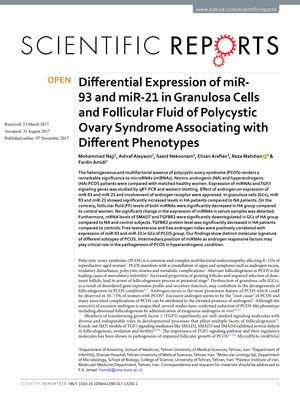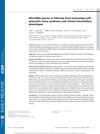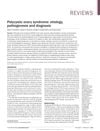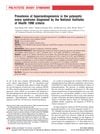Differential Expression of miR-93 and miR-21 in Granulosa Cells and Follicular Fluid of Polycystic Ovary Syndrome Associating with Different Phenotypes
November 2017
in “Scientific Reports”

TLDR The study found that certain microRNAs are higher in the cells and lower in the fluid of women with a specific type of polycystic ovary syndrome, and one microRNA could potentially help diagnose the condition.
The study examined the expression of miR-93 and miR-21 in granulosa cells (GCs) and follicular fluid (FF) of patients with polycystic ovary syndrome (PCOS), specifically comparing hyperandrogenic (HA) and normo-androgenic (NA) PCOS patients to healthy controls. It was found that both miR-93 and miR-21 were significantly higher in the GCs of HA PCOS patients than in NA patients, while their levels in FF were significantly lower in the HA group compared to controls. Additionally, the study observed a downregulation of SMAD7 and TGFBR2 mRNA, components of the TGFB signaling pathway, in the GCs of HA PCOS patients, with a corresponding decrease in TGFBR2 protein levels. The expression of these microRNAs in GCs was positively correlated with free testosterone and free androgen index in the PCOS group. The study also demonstrated that dihydrotestosterone (DHT) treatment could induce the upregulation of these microRNAs, an effect that was blocked by the androgen receptor blocker bicalutamide. miR-21 was identified as a potential biomarker for PCOS with a sensitivity of 94.8% and specificity of 39.1%, and while combining microRNAs did not improve the overall diagnostic accuracy, it did increase specificity to 47.8% and slightly reduced sensitivity to 87.1%. The number of participants in each group was not specified in the summary.
View this study on nature.com →
Cited in this study

research MicroRNA Species in Follicular Fluid Associating With Polycystic Ovary Syndrome and Related Intermediary Phenotypes
Certain microRNAs in the fluid around eggs are linked to Polycystic Ovary Syndrome and may help diagnose it.

research Polycystic ovary syndrome: etiology, pathogenesis and diagnosis
The document concludes that PCOS is a complex disorder caused by both genetic and environmental factors, affecting women's health in various ways, and requires personalized treatment.

research Prevalence of hyperandrogenemia in the polycystic ovary syndrome diagnosed by the National Institutes of Health 1990 criteria
Most women with PCOS have high levels of male hormones, and free testosterone is the best marker for this.

research Revised 2003 consensus on diagnostic criteria and long-term health risks related to polycystic ovary syndrome
The 2003 consensus updated PCOS diagnosis criteria and highlighted increased risks of diabetes and heart disease for those affected.
research Polycystic Ovary Syndrome
PCOS is a common hormonal disorder causing irregular periods and increased hair growth, linked to insulin resistance and long-term health issues.